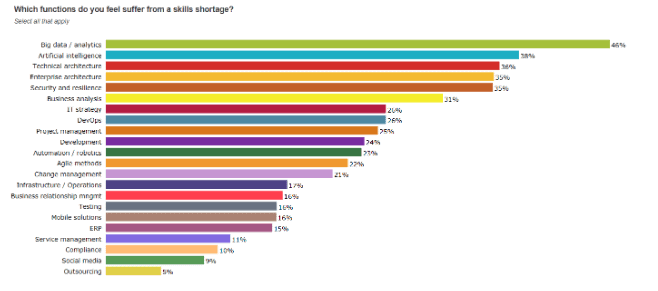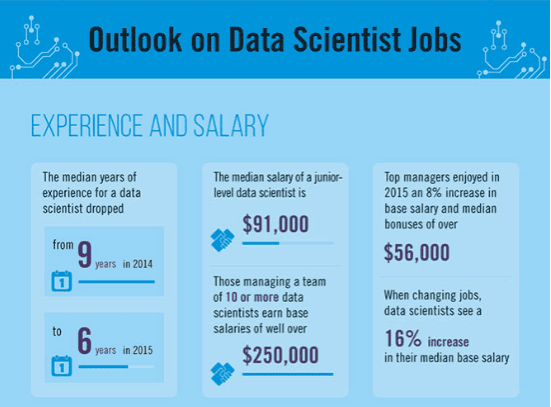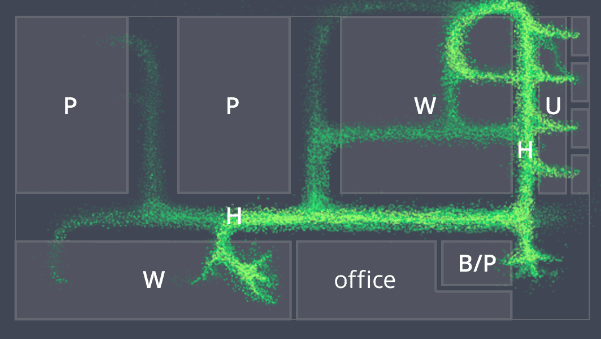Need any help? Contact us:

Table of Contents

The influence of data on business is expected to increase dramatically.
According to Tech Jury, the big data analytics market will reach $103 billion by 2023, and this year, the big data market has grown by 20%.
This rapid growth of the data analytics market is also explained by how much data each person generates daily. Tech Jury reports that one person will generate 1.7 gigabytes of data in just a second. This data carries a lot of value, thus, prompting businesses all over the world to hop on this trend as fast as possible to remain relevant.
Reportedly, in the U.S. only, 55% of all companies are already adopting big data analytics. This indicates the importance of data science and the need for professionals, who would bridge the gap between data analytics technology and business.
Sounds great, but there’s one problem.
There’s a shortage of data scientists.
What Is This Shortage Premised On?
Employers report the big gap between the high demand for data scientists and the low percentage of these specialists on the market.
DataNami, referencing KPMG, reports that 46% of companies experience a skills shortage in big data analytics:

Image credit: DataNami/KPMG
The shortage of professionals with big data analytics skills is followed by the shortage of professionals in AI and technical architecture, showing the distinctive gap between business and technology.
According to Inside Big Data, there might be several reasons why the shortage of data scientists keeps growing.
One of the reasons is exaggerated education and experience expectations. Although companies offer data scientists a rather attractive salary (starting from $91,000 a year), data scientists need at least 6 years of experience:

Image credit: Inside Big Data
As a result, Inside Big Data reports that companies already experienced a 50% to 60% gap between supply and requisite demand for data scientists. Thus, the source projects that there will be a need in 1.5 million more data scientists and analytics.
Both sources, mentioned above agree on one thing.
Companies should provide big data training to bring up in-house data scientists.
However, judging by the statistics above, companies are reluctant to do that.
So, here are several ways how data scientists can bridge the gap between business and technology.
1. Prioritizing Cybersecurity
A business can lose a lot of money because of weak cybersecurity. There have been precedents in the past few years with big corporations as well as governmental organizations losing millions of dollars as a result of cybersecurity attacks.
However, it’s not just money that they have lost. They have lost terabytes of valuable data, which is one of the risks of non-protected digital privacy. Some say that data is more precious than money. So losing it can be a serious threat to your business’s viability.
What’s the role of data scientists in increasing cybersecurity?
Data scientists employ machine learning to increase cybersecurity. Machine learning works on detecting and preventing threats by following the algorithms that identify unusual patterns and halt them.
Thus, with the help of machine learning, data scientists are able to:
-
- analyse past exploits
- single out unusual behaviour patterns
- detect new outliers
Data scientists also use machine learning to detect possible threats in the future using regression models.
One of these algorithms is called ARL (Associate Rule Learning), and it analyses the characteristics of a potential threat and, based on its prediction algorithm, generates a response to this threat.
ARL is often compared with sequence mining (another prediction algorithm). But unlike sequence mining, the order of the threat characteristics doesn’t matter to ARL.
What does it mean for your cybersecurity?
It means greater flexibility, as this prediction algorithm is able to identify a bigger variety of potential threats. The only bridge between your business and the benefits of this technology is a data scientist, who can successfully tackle cybersecurity by implementing machine learning algorithms.
2. Bringing More Commitment to AI
Cybersecurity is not the only sphere where data scientists can employ AI.
According to Forbes, 80% of all your company data is unstructured. This includes your marketing materials, emails, social media data, as well as many documents, which we used to sort by hand.
Today, however, the data from these sources is so big that your business inevitably needs technology to structure it.
To assess and structure this data, data scientists use machine learning, Natural Language Processing, as well as text analysis, which also speeds up and automates this process.
Apart from big data analytics and structuring, data scientists can employ machine learning and NLP to:
-
- Automate tasks. For instance, in customer support, data scientists can use machine learning to create conversational AI, which will give answers to standard questions from customers.
- Predict customer behaviour. Machine learning uses predictive analysis algorithms, allows data scientists to receive insights from different marketing channels, and based on past experiences, build patterns of customer behavior in the future.
- Track your company’s progress. Machine learning algorithms can be involved in marketing campaigns to automatically track KPI.
“Data scientists bridge the gap between your business and technology by helping you transfer to more versatile hardware (for instance, from IBM) that allows the more seamless implementation of machine learning and AI in general”, says Lora Jones, a data scientist from Subjecto.
3. Visualising and Standardising the Data
If your product uses big data, then having an in-house data scientist is crucial for your success.
Data scientists implement algorithms that visualise and standardise this data for a customer to receive a clear picture with no complications.
Such visualisation and standardisation methods include histograms, pie charts, geo maps, 3D plots, etc.
For instance, Indoorway, a Polish startup that uses RTLS to help manufacturers track processes and eliminate bottlenecks, uses a heat map as a method to visualise and standardise data, received by their Hubs from Tags, carried by forklifts or the employees at a manufacturing facility:

Image credit: Indoorway
This method replaces standard spaghetti diagrams that are usually drawn by hand, thus, completely automating the process of data visualisation and standardisation.
By visualising and standardising big data, data scientists not only help to acquire and retain customers with effective technological solutions. They also make work for other teams in your company much easier.
Visualisation and standardisation make huge volumes of data easier to understand and process, but there’s a bigger picture behind it as well.
“By making data more accessible, data scientists help your business adopt a more data-centric mindset. Since big data is one of the hottest trends for the upcoming years, getting on board of this trend as soon as possible should be your key priority”, says Will Bushe, business analyst at Studyker.
So, Set Your Mind to Adopt a Data-Centric Mindset Now!
Technology brings so many new opportunities to businesses.
Having an in-house data scientist brings your business closer to technology, helping you solve many problems, like cybersecurity threats and data protection, as well as structure, visualise, and standardise your data.
Of course, we still have to wait before we have enough data scientists on the market to cover the growing needs for technological innovations in business.
A great solution is to start providing data science training in your company. By doing this, you not only gain valuable specialists but also give a push to a data-centric mindset in your company.
Dorian Martin is a professional writer with huge experience in business-related topics. He likes to attend conferences and keep himself updated with every new release in terms of marketing, business management, and entrepreneurship. He is a senior writer at ClassyEssay and a content editor at TopEssayWriting.
This article does not constitute legal advice.
The opinions expressed in the column above represent the author’s own.
Start managing your legal needs with Zegal today
FURTHER READING:How to Write A Winning RFP (Request for Proposal) for Your B2B Venture




